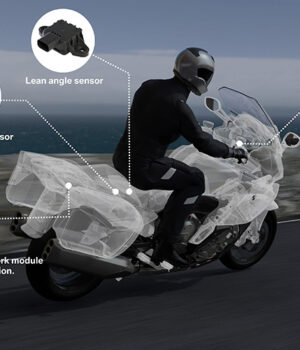Motor vehicle accidents are caused by dozens of factors. Inexperienced drivers, inattentive drivers texting or on cell phones, drivers impaired by alcohol, drugs, or lack of sleep. Of course, simply not seeing other vehicles is a classic reason for motorcycles to be hit. And then there is one of the largest categories of crash contributors — Aggressive Driving.
When you hear insurance companies advertising a “snap shot” or safe driving discount for customers that agree to have their driving habits monitored, you are hearing about “telematics.” Telematics involves monitoring a vehicle’s position via GPS, and collecting many other types of data. Many businesses use telematics to monitor the locations and habits of their driving employees and use that information to weed out poor performers, develop more efficient routes, and manage shipments.
OnStar programs now available on many vehicles are another example. OnStar is used as a service to locate stolen vehicles, provide remote lock out services, and even call for emergency assistance in event of an accident. Some parents use monitoring services to keep track of their kids’ whereabouts and monitor their driving habits.
Which leads us right in to the telematics programs used by insurance companies. The first generation of these services were billed to monitor “aggressive” driving habits such as speeding, hard braking and hard acceleration, as well as when drivers were on the road and how many miles they drove. Personally, I do not like these systems — there’s a bit too much “big-brother” feel knowing that your insurance company is collecting such data. And while I have been repeatedly assured that insurers do not monitor where you go — how can they not when they are essentially using GPS technology? (Maybe I’m a bit too paranoid since cell phones can now be tracked wherever you go, but I digress.)
Certain behaviors including excess speed, improper turns and passing, tailgating, careless or erratic driving and failure to obey traffic signals have long been associated with accidents. A recent report from AAA indicated that 55% of fatal accidents involved “Aggressive” driving habits such as these. So insurers are attempting to identify drivers that drive aggressively. The promise of these systems is that safe drivers who do not regularly drive aggressively will get a discount. Of course, the opposite side of that is that drivers that turn out to drive aggressively will pay more!
It is true that nearly everyone thinks they are a “good” driver. In 1980, Swedish psychologist Ola Svenson asked American and Swedish college students to rank their driving ability compared to their peers. 80% rated themselves as better than average. Statistically 50% had to be worse than their peers so some of those students were wrong!
Here’s some fun stats. A recent survey by Gas Buddy ranked 30 large American cities in order of most to least aggressive driving. They used speeding, hard braking, and rapid acceleration. (Speeding seems a natural thing to check — but why hard braking and acceleration? Habitually hitting the brakes hard indicates you are going too fast for road conditions or tailgating — habits which can lead to rear-end collisions.)
The top most aggressive cities in the survey were Los Angeles, Philadelphia, and Sacramento — all displaying more than 20% more aggressive driving than the rest of the country. The lowest? Cincinnati at 6% less aggressive, followed by Seattle and Minneapolis — both 10% less aggressive than average. (Yay Ohio for coming in on the “least aggressive” end of the study!) The study found that Fridays had the highest rate of aggressive driving, and Wednesdays the least.
A 2018 University of Connecticut study revealed that early versions of insurance company Telematics programs were designed to accurately measure the number of miles customers drove per year. (It’s logical that those that drive more have a higher potential for crashes and claims.) Relying on drivers to report their annual mileages was not always adequate. However, once Telematics programs were installed, companies realized they had access to much more information that could pinpoint which drivers had “aggressive” habits as well as other data that may help predict which drivers are more likely to be involved in an accident. For example, the National Highway Traffic Safety Administration has identified that the highest number of fatal accidents occur between 2:00am and 2:50pm on weekends (Bars just closed?). Not too far behind are weekday fatal crashes — most likely to occur 5pm and 5:59pm. (Surprise! – Rush hour!) So your telematics program will be checking how, how much, and when you drive.
I can see that in the future ALL insurers will be using such data in their pricing models. On one level that’s fair — let those most likely to cause an incident pay accordingly. This could get very interesting!
Karen Diehl operates Diehl Insurance with husband Eric. They agency specializes in motorcycle insurance for motorcycles and collector cars in Ohio, Kentucky and Indiana.











